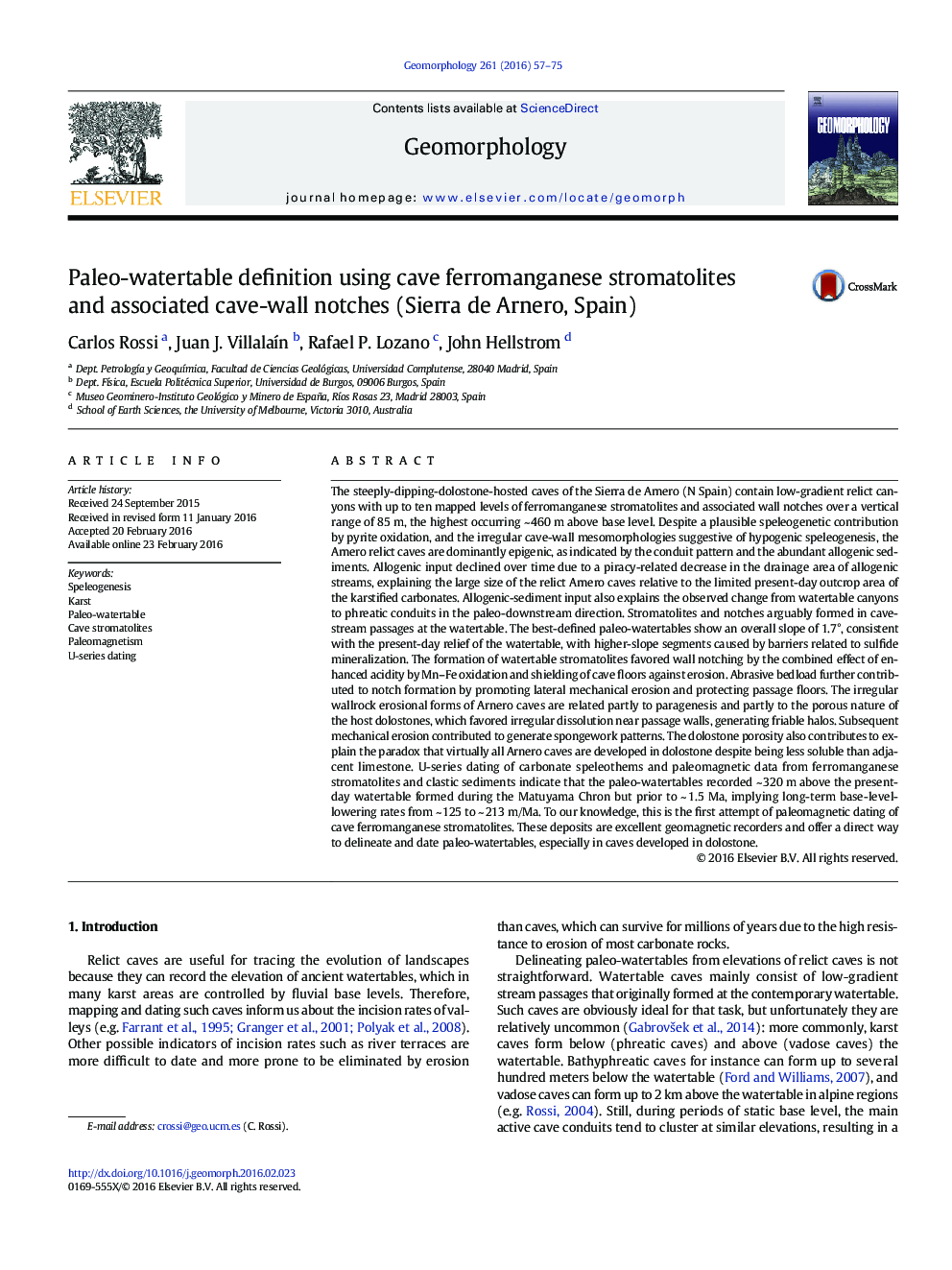| کد مقاله | کد نشریه | سال انتشار | مقاله انگلیسی | نسخه تمام متن |
|---|---|---|---|---|
| 4684047 | 1635388 | 2016 | 19 صفحه PDF | دانلود رایگان |

• Cave ferromanganese stromatolites and associated wall notches mark paleo-watertables.
• Paleomagnetism of cave Fe–Mn deposits: a new approach to date paleo-watertables
• Acidity produced by watertable Mn–Fe oxidation contributes to speleogenesis.
• Allogenic-sediment input controls watertable versus phreatic passage development.
• Matrix porosity in host dolostone induces spongework cave-wall mesomorphologies.
The steeply-dipping-dolostone-hosted caves of the Sierra de Arnero (N Spain) contain low-gradient relict canyons with up to ten mapped levels of ferromanganese stromatolites and associated wall notches over a vertical range of 85 m, the highest occurring ~ 460 m above base level. Despite a plausible speleogenetic contribution by pyrite oxidation, and the irregular cave-wall mesomorphologies suggestive of hypogenic speleogenesis, the Arnero relict caves are dominantly epigenic, as indicated by the conduit pattern and the abundant allogenic sediments. Allogenic input declined over time due to a piracy-related decrease in the drainage area of allogenic streams, explaining the large size of the relict Arnero caves relative to the limited present-day outcrop area of the karstified carbonates. Allogenic-sediment input also explains the observed change from watertable canyons to phreatic conduits in the paleo-downstream direction. Stromatolites and notches arguably formed in cave-stream passages at the watertable. The best-defined paleo-watertables show an overall slope of 1.7°, consistent with the present-day relief of the watertable, with higher-slope segments caused by barriers related to sulfide mineralization. The formation of watertable stromatolites favored wall notching by the combined effect of enhanced acidity by Mn–Fe oxidation and shielding of cave floors against erosion. Abrasive bedload further contributed to notch formation by promoting lateral mechanical erosion and protecting passage floors. The irregular wallrock erosional forms of Arnero caves are related partly to paragenesis and partly to the porous nature of the host dolostones, which favored irregular dissolution near passage walls, generating friable halos. Subsequent mechanical erosion contributed to generate spongework patterns. The dolostone porosity also contributes to explain the paradox that virtually all Arnero caves are developed in dolostone despite being less soluble than adjacent limestone. U-series dating of carbonate speleothems and paleomagnetic data from ferromanganese stromatolites and clastic sediments indicate that the paleo-watertables recorded ~ 320 m above the present-day watertable formed during the Matuyama Chron but prior to ~ 1.5 Ma, implying long-term base-level-lowering rates from ~ 125 to ~ 213 m/Ma. To our knowledge, this is the first attempt of paleomagnetic dating of cave ferromanganese stromatolites. These deposits are excellent geomagnetic recorders and offer a direct way to delineate and date paleo-watertables, especially in caves developed in dolostone.
Journal: Geomorphology - Volume 261, 15 May 2016, Pages 57–75